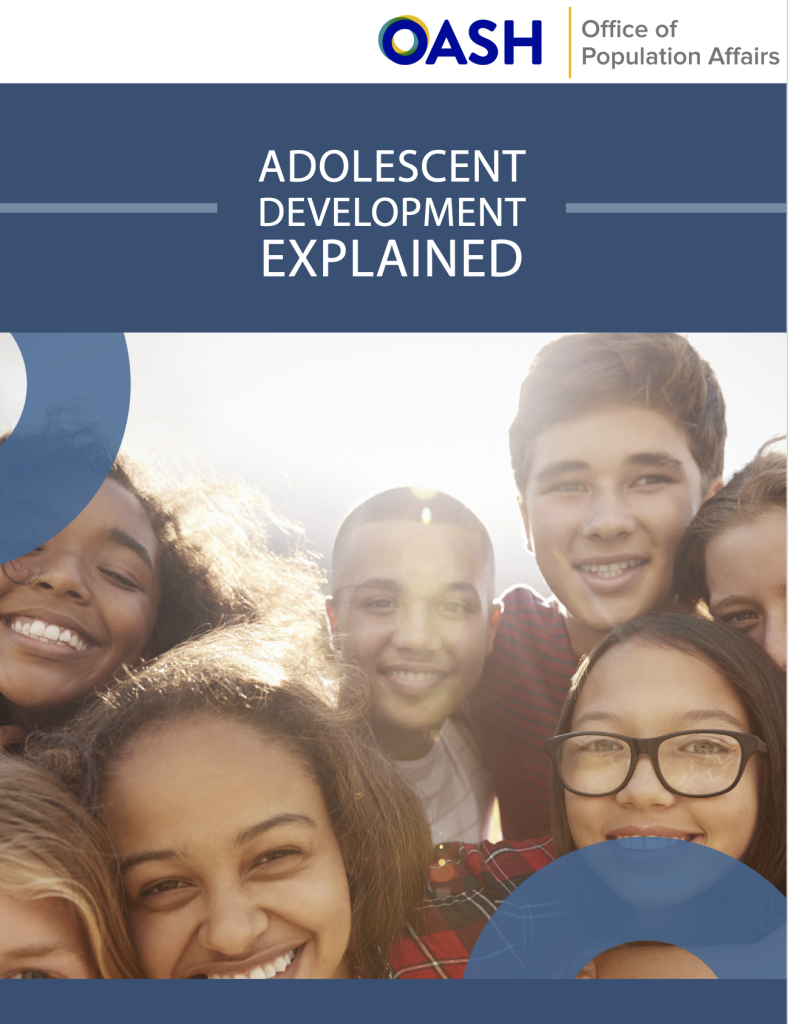Adolescent Development Explained [downloadable]
 Adolescence is a time of enormous transition. Although adolescence may appear to be a turbulent time, it is also a period of great potential as young people engage more deeply with the world around them. Adolescents typically grow physically, try new activities, begin to think more critically, and develop more varied and complex relationships.
Adolescence is a time of enormous transition. Although adolescence may appear to be a turbulent time, it is also a period of great potential as young people engage more deeply with the world around them. Adolescents typically grow physically, try new activities, begin to think more critically, and develop more varied and complex relationships.
The Office of Population Affairs worked with the Johns Hopkins University, Bloomberg School of Public Health, Center for Adolescent Health to create Adolescent Development Explained – PDF, a guide that examines the major developmental changes that occur in adolescence and provides suggestions on how parents and caring adults can support young people as they navigate through this critical period.

The guide specifically focuses on five areas of adolescent development:
Physical — hormonal changes and development
Cognitive — changes in the way the brain functions
Emotional — how adolescents process emotions and stress
Social — changes in familial, social, and romantic relationships
Morals and values — how adolescents view and approach the world
These five areas often overlap and intersect. For instance, adolescents who are struggling with depression and/or anxiety also can experience problems with their school work, parents, peers, and physical health, and may lose interest in activities they used to enjoy. Adults need to understand this complexity, respond in a supportive way, and seek professional help for such adolescents if needed.
For each of the five areas of development, parents and professionals will learn about:
- Changes that are a normal and necessary part of adolescence
- Different ways that adolescents experience these changes and reasons for this variation
- How adults can support adolescents’ optimal health and development by guiding young people and helping them build the skills they need to thrive
Parents and other adults who care for and work with adolescents must learn about adolescent development and continuously educate themselves about the realities of adolescent lives today. Teens’ lives are complex, can change quickly, and can present issues that did not exist (e.g., social media) or were not fully acknowledged (e.g., mental health disorders) for prior generations of adolescents. If parents and caring adults understand the challenges and opportunities that adolescents face today, they can provide more effective support and encouragement for young people in their professional and personal lives.







